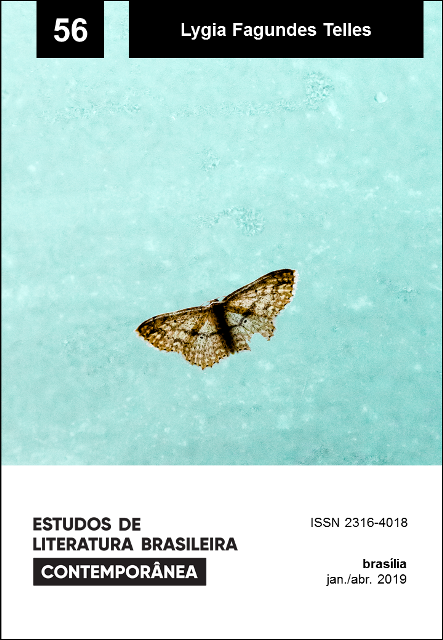Ladrão de galinhas: a dialogue on aesthetics in the image book
DOI:
https://doi.org/10.1590/2316-40185616Keywords:
visual text, children literature, readability, PNBE 2014Abstract
Image-driven literatures have proven, over time, to be of equal importance to other genres available in educational spaces. As such, we propose to analyze the aesthetic attributes that comprise one of these works, Ladrão de galinha (Chicken thief), written by Béatrice Rodriguez (2009), which was selected and sent by the National School Library Program (called PNBE) in 2014 to the public networks of Early Childhood Education. We adopted as methodology a qualitative approach, taking as reference Barthes’s (2013b) semiotics. We use the concepts of enunciation, displacement and representation, which contribute to the process of textual signification, understanding that they do so such that other aesthetic attributes are effective communicators in the realization of visual literature. Among the other specialists, we rely on the theoretical support of Collaro (2012), Gomes Filho (2014), Heller (2014), Hunt (2010), Kandinsky (1997), Kant (2013), Linden (2011), Neitzel and Carvalho (2013), Neitzel and Oliani (2008), Nikolajeva and Scott (2011), Santaella (2012), Todorov (2011), Willsberg and Forssman (2007). We have determined that there is a continuous effort to improve this kind of book composed exclusively of images, which allows for appreciation of the visual text beyond entertainment, making it an object of actualization through the aesthetic experience that it provides. We raise the question of “readability” in regards to the visual text so that we might accept or reject, improve or question the possibilities of reading that stimulate thought.
Downloads
Published
How to Cite
Issue
Section
License
Authors who publish in this journal agree to the following terms:
a) The authors maintain the copyright and grant the journal the right of first publication, the work being simultaneously licensed under the Creative Commons Attribution License-Non Commercial 4.0 which allows the sharing of the work with acknowledgment of the authorship of the work and publication this journal.
b) Authors are authorized to enter into additional contracts separately, for non-exclusive distribution of the version of the work published in this journal (eg publish in institutional repository or as a book chapter), with authorship recognition and publication in this journal.
c) Authors are allowed and encouraged to publish and distribute their work online (eg in institutional repositories or on their personal page) after the editorial process, as this can generate productive changes, as well as increase the impact and citation of published work (See The Effect of Free Access).
d) The authors of the approved works authorize the magazine to, after publication, transfer its content for reproduction in content crawlers, virtual libraries and the like.
e) The authors assume that the texts submitted to the publication are of their original creation, being fully responsible for their content in the event of possible opposition by third parties.


